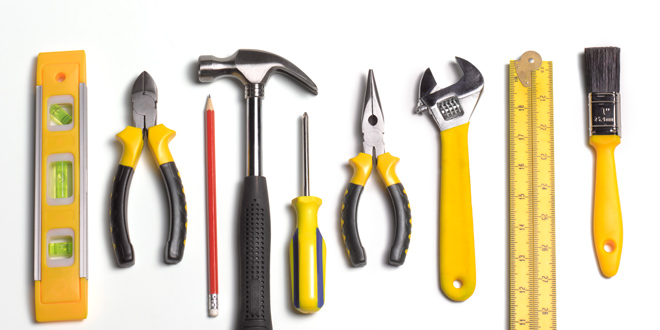Hand tools often represent one of the most reliable categories in a home improvement store. Whether a young couple is moving into a new home and building up their supply of DIY tools or a pro needs a replacement for their go-to wrench, hand tool sales are some of the most common purchases at home improvement stores. However, new data from the Home Improvement Research Institute (HIRI) shows that among core categories, hand tools have shown one of the most substantial drops in purchase rates over the past five years. Use the hand tools data found on the following pages to learn who is buying hand tools and the strategies you can use to grow this staple category.
Who’s Buying Hand Tools?
With HIRI’s data, you can get a better view of who your hand tool customers are. By recognizing who you’re selling to, you can expand your marketing efforts to capture sales from previously underserved consumer segments.
The research shows men are twice as likely to purchase hand tools as women, but as women complete more DIY projects, that figure could fluctuate.
Incorporating images of women using hand tools in your in-store signage and digital outreach could be a key way to encourage women to shop for hand tools at your business.
HIRI’s research shows the largest purchasing group of hand tools is 35-54 years old, and the average purchaser is 48. This data suggests older customers and younger customers are less likely to buy hand tools, meaning if you formulate specific marketing outreach to address these potential customers, you could boost your operation’s overall hand tool sales.
Living on the Margins
Many hand tools have low margins, meaning cutting prices further to boost sales could be a shortsighted strategy. To keep hand tool sales strong, try adopting some strategies to keep your hand tools merchandising enticing and relevant to your customer base.
Incorporate hand tools into your full-project merchandising tactics. Asking customers about the projects that bring them into your store will help you suggest hand tools to add to their arsenal. By recommending useful, durable products, you’ll become a reliable, knowledgeable partner for the customer.
Once you have your customer engaged, you can quickly build trust and recommend a suite of tools not only for the immediate project the customer is working on, but also for their day-to-day needs as a homeowner or renter.
- Competitive price: 51%
- Already in store to buy other items: 36%
- Convenient location: 25%
Category top-performers:
- Utility knives
- Screwdrivers
- Hammers
- Measuring tools
Source: 2018 Product Tracking Study, Home Improvement Research Council
Check It Twice
Even if customers don’t arrive at your store with a list in hand of the specific hand tools they need, you can help them identify key hand tools to add to their at-home toolbox.
If you’re helping customers build their supply of tools, be sure to explain the importance of each specific tool. When customers hear a thorough explanation of what different tools can be used for, it can unlock new project possibilities in their mind and net your business long-term recurring sales.
Don’t sell customers items they don’t need, but ensure they leave with a comprehensive toolkit to weather any DIY storm. By connecting them with as many useful tools as possible, you’ll build trust and keep sales at your business—not a competitor’s.
Even though hand tools may be old hat for you, for many younger customers, they could be truly unknown. Viewing hand tool sales as an entryway with young customers is a solid strategy that can position your independent home improvement store as a reliable partner for them. When they’ve had a good experience buying a top-of-the-line hand tool from you, they’ll probably remember your business when it comes time to tackle a more involved DIY project.
Invest in the Staples
Hand tools may not be the most exciting category on your floor, but they do represent the backbone of many home improvement operations. Taking time to ensure hand tool sales are solid and stable is a simple way of anchoring your business as a trusted go-to partner for your community.
Many younger customers often turn to local handyperson or repair services for simple DIY fixes, but by holding hand tool demos at your business, you can empower them to tackle simple projects themselves and turn to you for the tools to make them possible.
 Hardware Retailing The Industry's Source for Insights and Information
Hardware Retailing The Industry's Source for Insights and Information









